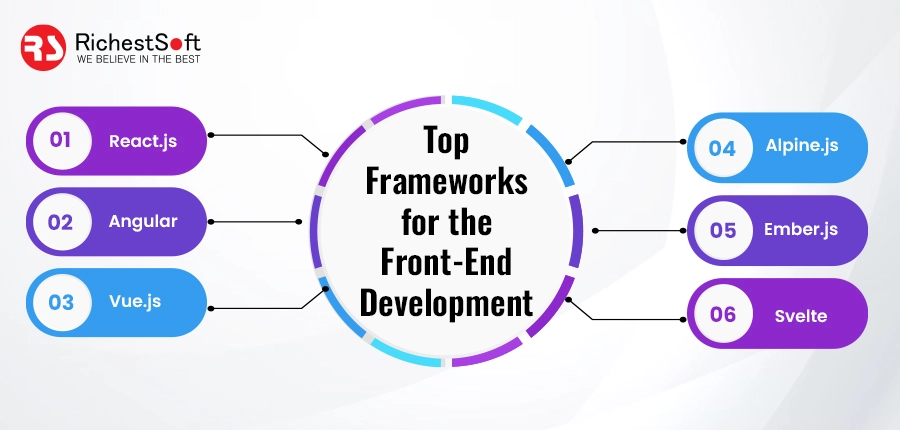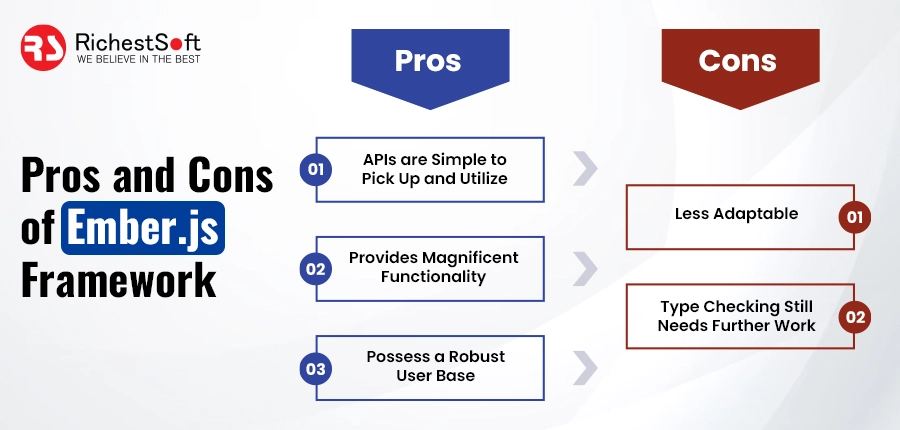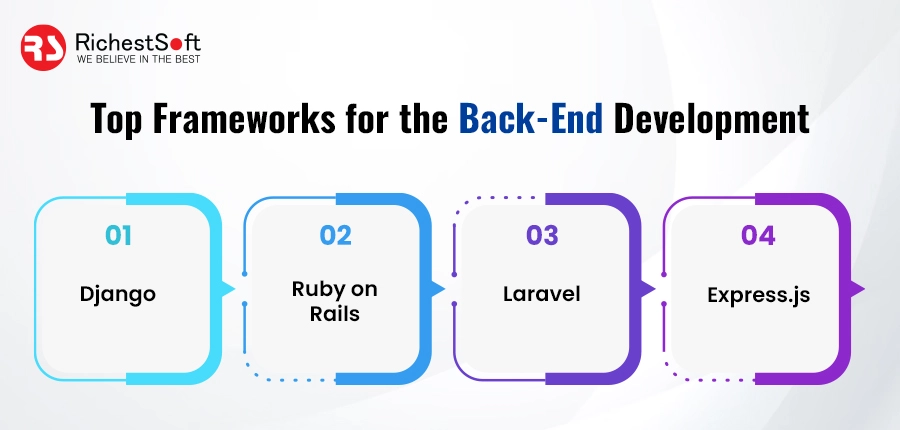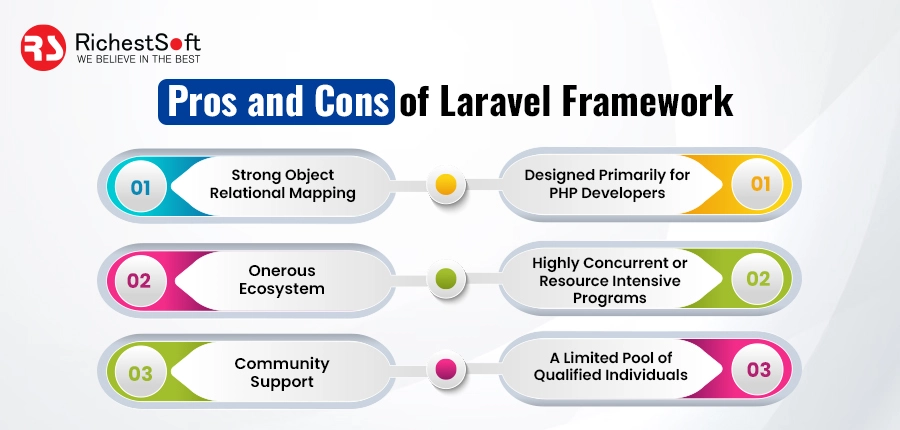Do you need a web application development framework to get your next business on the right foot? Choosing the finest option from among so many alternatives can be challenging. But have no fear! We have created a list of the finest available web application development frameworks to assist you in rapidly developing robust, scalable applications. We have comprehensive guides available for various frameworks, including React and Angular. Let us get right in and look at the best web application frameworks.
Introduction
Nowadays, Web developers can choose from numerous frameworks. These frameworks facilitate website creation, but they do so in various ways. This essay will analyze some popular web application frameworks. We will break down the fundamentals of each framework and highlight their respective benefits and applications. The data supplied here should serve as a guide while you decide on a suitable structure for your work.
What is a Web Application Development Framework?

A web application development framework is a set of resources for building web-based software. A framework supplies the application’s architecture; it may contain libraries, tools, and application programming interfaces. It is faster to use a framework than start from scratch.
Each framework for designing web apps has pros and cons. The framework that needs to be used for a given endeavor depends on its particulars. Ruby on Rails, Laravel, Express.js, and Django are well-known web application development frameworks.
Popular Web Frameworks
Currently, many popular options exist for developing websites. Web application development frameworks are of two types. Front-end and back-end development frameworks. Here we will categorize the different frameworks which come under front-end and back-end.
Top Frameworks for the Front-End Development

1-React.js
When creating user interfaces, React is the JavaScript library of choice. Facebook and independent programmers and businesses work together to keep it updated and secure. The foundation of single-page or mobile apps built with React.
React prioritized speed, efficiency, and scalability. It achieves this purpose by dividing the UI into “components.” React only updates the impacted component when users interact with it rather than re-rendering the entire page. Because of this, React apps are quick to react.
Pros and Cons of React.js Framework
Pros:
- The use of a virtual DOM allows for high-speed rendering.
- Code reuse and maintainability are both improved by reusable user interface components.
- A sizable group has a wealth of available activities and resources.
- With React Native, developers can create native mobile apps from a single code source.
Cons:
- Quite tough to learn, especially for newcomers.
- Additional libraries and tools can be integrated for full functioning.
- There are few in-built capabilities; other libraries are needed for state management, routing, and form processing.
2- Angular
A wide variety of frameworks are available for creating web applications, each with its pros and cons. But if you ask developers about frameworks, Angular always comes first.
The Google-created Angular framework was written in JavaScript. It is used to create apps that function on numerous mobile platforms. Angular’s two-way data binding, Model-View-Controller (MVC) architecture, and Dependency injection are some of its remarkable features.
Pros and Cons of Angular Framework
Pros:
- All-inclusive environment for developing complex web applications, with access to numerous helpful tools and frameworks.
- An enormous support for TypeScript to improve developer efficiency and code quality.
- Two-way data binding makes it easier to deal with alterations to UI data.
- The use of a reliable dependency injection framework has increased modularity and testability.
Cons:
- The vast feature set and complicated concepts result in a steeper learning curve.
- Initial loading times are immense due to the framework’s larger file sizes.
- Due to insufficient compatibility between major releases, upgrades may be necessary while switching.
3-Vue.js
Vue.js is a JavaScript framework that is both modern and lightweight, making it ideal for use in the development of user interfaces and single-page apps. Vue.js employs a virtual DOM like React to track UI state changes. Vue.js’ declarative syntax simplifies learning and use. Vue.js’ native transitions and animations let you create a beautiful, simple app.
Pros and Cons of Vue.js Framework
Pros:
- Taking an incremental adoption approach makes learning and implementing existing projects simple.
- Superbly efficient, space-saving, and lightweight framework.
- Easy syntax to pick up and use right away.
Cons:
- Compared to React.js and Angular, the ecosystem is much smaller.
- There is less money and support from corporations compared to competing frameworks.
- Inadequate aid for demanding applications on a grand scale.
4- Alpine.js
Alpine.js is a JavaScript-based lightweight front-end web development framework that makes website interaction easy. Developers without front-end framework experience should be able to use it immediately.
Pros and Cons of Alpine.js Framework
Pros:-
- With just a few kilobytes of additional capacity, you can create interactive web pages with more features and tools like data binding, event management, and conditionals.
- Reduces the barrier to entry for taking advantage of frameworks’ declarative and reactive features.
- It delivers high-quality performance. It’s a lightweight framework that loads quickly and produces responsive web pages.
Cons
- Changes made in a non-interactive event do not trigger a DOM refresh.
- Significant restrictions exist when working with layered components or facilitating communication between them.
5- Ember.js
Ember.js is a JS front-end web development framework for building complex client-side web apps. Ember.js simplifies sophisticated web app development with pre-assembled features and tools. One such feature is a robust templating engine; others include a data layer for handling application data and navigation, and more include routers. Ember.js makes it simple to create real-time web applications by automatically updating the UI whenever data changes.
Pros and Cons of Ember.js Framework

Pros:
- APIs are simple to pick up and utilize.
- Provides magnificent functionality.
- Include a full-fledged set of front-end components like a router, services, and an asset pipeline.
- Possess a robust user base that gives programmers access to helpful tools and feedback.
Cons
- Less adaptable; means enormous for little jobs but difficult for big ones.
- Type checking still needs further work, especially in the object model.
6- Svelte
Svelte is an advanced front-end web development framework that gives programmers a clear, lovely HTML templating language when developing contemporary web apps. Reactive UI elements can be created more quickly and easily. Does this framework, however, suit your needs? Weighing the advantages and disadvantages can help us learn more.
Pros and Cons of Svelte Framework
Pros:
- There is not much of a steep learning curve.
- Its speed is increased by using a server-based rendering approach.
- Includes well-designed, powerful APIs.
- Compile-time optimizations mean less waiting around at runtime.
Cons
- The architecture of compilers moves complexity from source code and run time to tools and build time.
- Not suitable for large projects.
Also Read: Mobile App Development Frameworks | Top 10 List
Top Frameworks for the Back-End Development

1– Django
Django is a web development framework that uses the Model-View-Template architectural pattern. Well-known brands employ this system, including Google, YouTube, and Instagram. The explosive growth in Python’s user base has been a driving factor in Django’s widespread acceptance. It follows the DRY and Convention Over Configuration design principles.
Django provides developers with methods and resources for constructing safe websites, and the framework also includes security features, such as preventing code execution in the template layer. In addition, Django is distinct from other back-end web development frameworks due to its numerous sophisticated capabilities.
Pros and Cons of Django Framework
Pros:
- Scalable and reliable framework with a full suite of utilities.
- Provides tools for authentication, database management, and more “right out of the box,” adhering to the “batteries included” approach.
- Superior protection against web exploits and valuable security.
- Supported by a large and helpful community and meticulously documented.
Cons:
- Mainly for Python programmers, this severely restricts translation options.
- It has the potential to be overkill for lighter tasks.
- Compared to micro-frameworks, it lacks flexibility, which could make customizing it more difficult.
2- Ruby on Rails
Ruby on Rails is another popular choice for web frameworks besides PHP. Ruby’s understandable syntax and large, supportive development community are just a few of the advantages of this language. Ruby on Rails is famous, but it may be sluggish at times, and it may be challenging to set up Ruby on Rails projects on shared hosting.
Pros and Cons of Ruby on Rails Framework
Pros:
- Convention over configuration is prioritized to facilitate speedy programming and uniform source code.
- Functions like database migrations, test automation, and safety features are already included.
- Sophisticated syntax with an emphasis on developer efficiency.
- Numerous gems (libraries) to choose from, all of which have strong community backing.
Cons:
- Scalability is minimal in comparison to other frameworks.
- For highly utilized applications, Ruby’s performance could be a bottleneck.
- Not as many available jobs as in another framework based on JavaScript.
3- Laravel
Laravel is a web development framework with a syntax that is both expressive and aesthetically pleasing. One of the most extensively used PHP frameworks is by Microsoft, Yahoo, and even NASA. Laravel is an excellent framework for building large or small applications.
Pros and Cons of Laravel Framework

Pros:
- Syntax and code expression that is both beautiful and expressive, improving developer efficiency and legibility.
- Strong Object-Relational Mapping (ORM) for working with databases.
- An onerous ecosystem with many different packages and libraries to choose from.
- Community support and extensive documentation.
Cons:
- Designed primarily for PHP developers, reducing translation options.
- Highly concurrent or resource-intensive programs may experience performance issues.
- A limited pool of qualified individuals because of its relative youth compared to other frameworks.
4- Express.js
Express.js is an efficient JavaScript web application framework. Its simplicity, quickness, and various third-party Express.js libraries are its advantages. Express.js doesn’t include ORM or template engines like other frameworks.
Pros and Cons of Express.js Framework
Pros:
- A lightweight and minimal framework that boosts performance and speeds up development times.
- Modularity and adaptability of application parts.
- Famous for usage in the creation of APIs and other “microservices.”
- An extensive ecosystem with a wide variety of middleware and plug-ins.
Cons:
- Compared to more robust frameworks, it lacks essential functionality.
- It requires supplementary libraries like routing, form processing, and database linking.
- Programming in an asynchronous fashion can be laborious for newcomers.
Also Read: Top 10 Best Cross-Platform App Development Frameworks
FAQs
Q1: Which web application development framework should I choose?
Ans: Several considerations, including the nature of the project, the preferred programming language, the desired level of scalability, and the development team’s experience level, should be considered while deciding on a web application development framework. Before settling on a framework, weigh your needs against its features, community, learning curve, performance, and ecosystem.
Q2: Can I use multiple frameworks in a web application?
Ans: A web application can make use of numerous frameworks at once. Micro-frontends and composite applications are two terms used to describe the practice of using multiple frameworks to create individual modules of an application. However, this requires careful planning and coordination between the various frameworks, as it significantly increases complexity.
Q3. Are web application development frameworks free to use?
Ans: Numerous free and open-source frameworks are available for developing web applications. However, some frameworks may have enhanced versions or functionalities requiring a license or a subscription. While the frameworks needed to construct your web app are free, you may incur additional costs for hosting, deployment, and third-party services.
Conclusion
This article discusses today’s best and most extensively used web application development frameworks. Each framework is distinct in its manner. Choosing the finest one, therefore, remains up to you and your circumstances. You can be confident, however, that any of these frameworks will give you a solid foundation for constructing dependable, secure, and scalable online programs for your company.
 +1 315 210 4488
+1 315 210 4488 +91 798 618 8377
+91 798 618 8377


